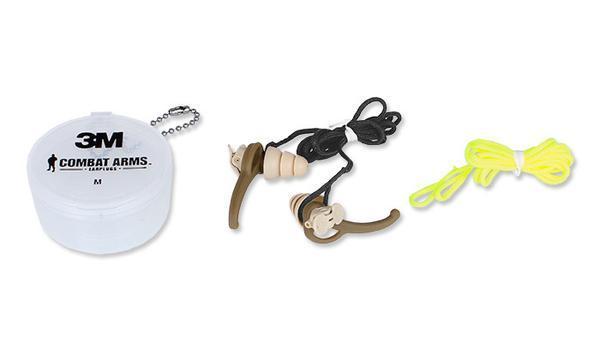

The lawsuits allege that 3M knew about the defects, but they falsified the certification. While the company claimed that it was higher, it was reported that it actually averaged 10.9, which is far below military standards.

In essence, anyone whose earplugs were too short had an increased risk for developing hearing damage.Īccording to some sources, these earplugs also had an issue with their NRR. This gradually allowed increasing amounts of noise, although the wearers did not realize it.

COMBAT ARMS EARPLUGS FULL
The defect exists in the stems, which are too short to offer full protection for some users. It was found that the earplugs were not long enough to be properly inserted into the user’s ear canals, so over time, the earplugs tended to loosen up. These standards were supposed to be adequate enough to guard against loud sounds made by most of the military weapons. The earplugs were supposed to shield ears from decibel levels up to 190 dB with a noise reduction rating (NRR) of 22 dB in the closed mode. The open mode still allowed users to hear lower noise levels, and users can alternate between the different modes with an in-ear mechanism. The open mode was designed for high-pitched sounds, like gunfire. The closed mode was designed to provide constant protection for lower-level noises, like approaching enemies, airplanes, and vehicles. The Combat Arms Earplugs have Closed/Constant Protection and Open/Weapons Fire modes. Marines Corps were so impressed with the effectiveness of the earplugs that they ordered 20,000 pairs. According to the American Journal of Public Health, the U.S.

The Combat Arms Earplugs were standard issue military equipment. military allowed them to supply approximately 15,000 earplug packages annually with the guaranteed price of approximately $9 million in annual sales. The earplugs were manufactured from 2003 to 2015, and were used to protect military personnel from exceptionally loud sounds and high noise levels, like gunfire and explosions.ĭuring this time, 3M’s exclusive deal with the U.S. 3M bought Aearo in 2008 and assumed the contract. These were strong incentives that pushed the need for effective military personnel earplugs.Īearo Technologies won a contract to supply their dual-ended Combat Arms Earplugs to the military and it went into effect in 2003. During the war in Iraq, the use of mortar rounds, improvised explosives, and rocket-propelled grenades increased these risks even further. It is well-known that combat operations, noises from vehicles, explosions, and extended training periods all increase the risk for hearing loss and other injuries in soldiers. This purportedly led to tinnitus, loss of balance, and hearing loss. They alleged that the plugs had defective designs and that proper usage instructions were not provided. Then, in 2019, hundreds of veterans filed lawsuits against 3M, claiming that these earplugs failed to maintain tight seals, allowing dangerous, loud signs to get into their ears. Although there was a large monetary payout, 3M did not admit responsibility. Out of these funds, $1.9 billion was awarded to a whistleblower who reported 3M for selling the defective devices to the government. The company ended up paying a $9 billion settlement to the government in 2018.


 0 kommentar(er)
0 kommentar(er)
